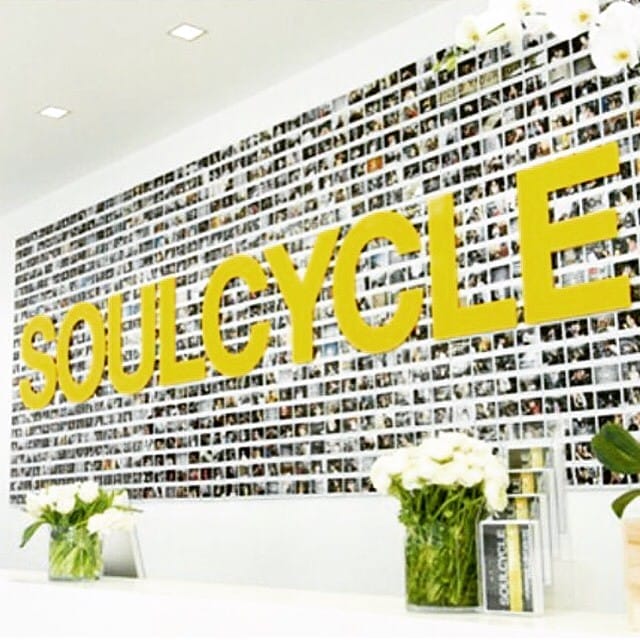When it comes to generating fitness hype, perhaps no brand has done it better than SoulCycle.
It’s nearly impossible to scroll through social media or make a trip to the gym without catching a glimpse of the renowned golden wheel, thanks to its impressive 180,000 Instagram subscribers, 85,273 Facebook likes, 87,600 Twitter followers, and nearly 440,000 active riders (with approximately 20,000 serving as weekly regulars). This “cult” following, as some have dubbed it, has permeated the entirety of the fitness realm—and beyond it.
Yet the most interesting part of the brand’s hype isn’t how great it is, but rather how it started—with a single dream focused on bringing the joy and empowerment of being together to a workout.
“We were looking for an exercise experience that was going to be fun, exciting, challenging,” SoulCycle co-founder Julie Rice told Business Insider. “There were a lot of workouts, but there was really nothing out there that was efficient, that was joyful, that was about community, that was something that you really looked forward to.”
Rice and her partner, Elizabeth Culter, introduced 45-minute full-body group cycling sessions to a market that was primarily funded by individual gym memberships. Instead of labeling the brand as a quick, fix-all workout, they referred to it as a journey to all-encompassing personal health, with the tagline of “Find Your Soul.” On this journey, they presented consumers with everything they might need to live a better life than they lived yesterday: a tough workout for the physique, decompression for the mind, and togetherness for the heart.
It’s no surprise that millennials can’t get enough of it. 
After all, millennials consider themselves to be dedicated to holistic health. This means that health is more than just physical, but also mental and spiritual. Specifically, 53 percent of millennials agree that health and wellness is important in their lives, with only family ranking higher, according to a Yahoo report. This report also found that 84 percent of millennials exercise at least once per week (with half of those respondents claiming exercise is their passion), they are twice as likely to do yoga weekly or turn to meditation than Generation X and Baby Boomers, and nine out of 10 will pursue good health to be successful in other aspects of their lives.
In addition, millennials are the driving force of health and fitness apps’ 88 percent growth since 2014. Nearly 35 percent of fitness tracker owners and 69 percent of smartwatch wearers are millennials, according to the NPD Group, and one-in-three millennials share health and fitness-related content online at least once per week.
This tendency to share information about wellness activities also supports the generation’s desire for peer affirmation. Millennials constantly seek guidance and affirmation from their social circles, with 70 percent stating they feel more excited about doing things when their friends support them. Millennials are also highly motivated by what others think of their image, with 73 percent saying they exercise to improve their appearance, as their physique is very important to them.
Based on these insights, SoulCycle would have managed well enough if it simply offered a group cycling workout. It instead found astronomical success because it took the insights and went above-and-beyond, offering millennial consumers a ready-made, packaged lifestyle. This lifestyle is centered on the ideals they want to promote, simultaneously contributing to their social lives and equipping them with a sense of belonging. Ultimately, the lifestyle cements consumer brand loyalty because it proves that the brand sells more than products.
It’s the perfect analogy for what’s currently happening in the saturated athleisure market. Every brand in the category answers basic consumer needs when it comes to look, fit and comfort-level. The majority of brands are managing to stay afloat based on this basic product offering, but some are drowning. And both floaters and drowners would likely prefer a life raft.
To reach that raft (and perhaps even upgrade to a boat), it’s important that athleisure brands follow SoulCycle’s lead and differentiate themselves in the market. They need to determine what they stand for and then exhibit that to the world. The best way to do this is through the creation of their very own lifestyle offering- one that contains experiences, builds communities and exudes meaningful ideals. This will be the key to creating and keeping brand equity, even among a crowded group of competitors.
Editor’s Note: Skyler Huff, Content Specialist at FutureCast, contributed to this post
























